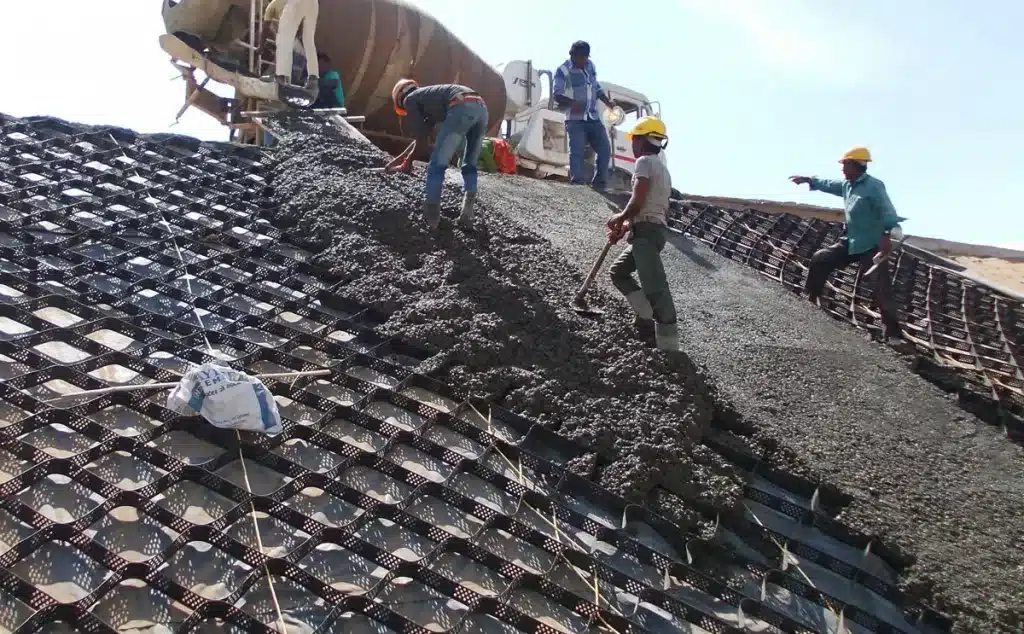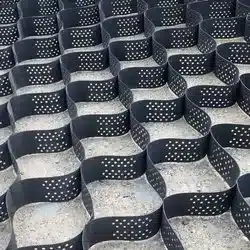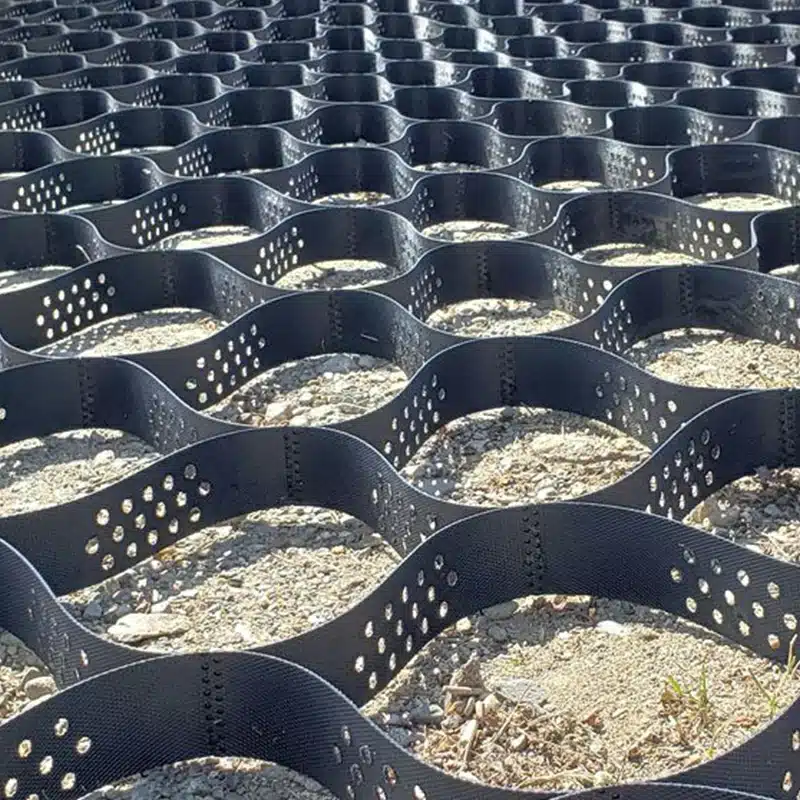+86-159 9860 6917
info@geofantex.com
geofantex@gmail.com
+86-400-8266163-44899
In the world of civil engineering and road construction, innovative technologies like geocells are changing the industry. Geocells, also known as cellular confinement systems, are being used to reduce erosion, stabilize soil, protect channels, and provide structural reinforcement for load support and earth retention. This article explores how geocells improve road construction, from stability to environmental benefits.

What is the use of geocells in road construction?
Geocells, constructed as three-dimensional, honeycomb-like structures using high-density polyethylene (HDPE) or similarly durable materials, provide a robust and stable foundation for road construction. They achieve this by effectively interlocking and confining the aggregate base, which results in reduced deformation during the pavement’s life. Geocells play a multifaceted role in road construction, offering several advantages:
- Soil Stabilization: Geocells effectively distribute the load of traffic, reducing soil erosion and preventing lateral movement of soil particles. This improves the stability of the road, especially in areas with soft or weak subgrades.
- Slope Protection: Geocells can be used to reinforce and protect slopes along the road, reducing the risk of landslides and erosion.
- Load Support: Geocells provide load-bearing support, reducing pavement thickness and associated construction costs. They help disperse heavy loads, extending the lifespan of the road.
What is the use of geotextile and geogrid in road construction?
In road construction, geotextiles and geogrids serve essential roles:
Geotextiles:
- Separation: Prevent soil mixing between layers (e.g., subgrade and base course).
- Reinforcement: Enhance the strength of weak soils.
- Filtration: Allow water drainage while preventing soil migration.
- Drainage: Redirect moisture to prevent structural damage.
Geogrids:
- Reinforcement: Provide extra strength to soils, enhancing load distribution.
- Soil Stabilization: Prevent soil movement and reduce road subsidence.
- Base Course Stabilization: Improve the performance of granular materials.
- Pavement Performance: Reduce material thickness while maintaining strength.
Together, they improve road durability, stability, and longevity.

What are the benefits of geocells?
The use of geocells in road construction offers a multitude of benefits, making them a versatile solution for a wide range of projects. These benefits include:
- Enhanced Load-Bearing Capacity: Geocells distribute loads efficiently, reducing the pressure on the subgrade and increasing the road’s load-bearing capacity. This can extend the road’s lifespan and reduce maintenance costs while providing structural reinforcement for load support and earth retention.
- Improved Slope Stability: Geocells not only increase load-bearing capacity but also prevent soil erosion, stabilize soil, protect channels, and provide structural reinforcement for load support and earth retention. This enhances the stability of slopes, reducing the risk of landslides and costly repairs.
- Cost Savings: By reducing the amount of construction material needed and minimizing maintenance requirements, geocells can lead to substantial cost savings in road construction projects.
- Environmentally Friendly: Geocells promote sustainable construction practices by reducing the need for resource-intensive materials and minimizing soil erosion and environmental impact. They help reduce erosion, stabilize soil, protect channels, and provide structural reinforcement for load support and earth retention.
- Versatility: Geocells can be easily adapted to various road construction scenarios, making them a versatile solution for a wide range of projects.
What is the lifespan of a geocell?
The lifespan of a geocell, which is a cellular confinement system used in construction and civil engineering to stabilize soils, typically ranges from 50 to 100 years under normal conditions. The durability depends heavily on factors such as:
- Material Quality: Geocells made from high-density polyethylene (HDPE) or novel polymeric alloys are more durable and resistant to environmental degradation.
- Environmental Conditions: Exposure to extreme temperatures, UV radiation, and chemicals can degrade the material faster unless it is specifically treated for these conditions.
- Installation and Maintenance: Proper installation according to manufacturer specifications and routine maintenance can extend a geocell’s lifespan by preventing issues like water logging or uneven pressure distribution.
Manufacturers often provide warranties that last up to 75 years, indicating confidence in the long-term performance of their products under recommended usage conditions.



Get Free Sample
We’ll respond as soon as possible(within 12 hours)





















